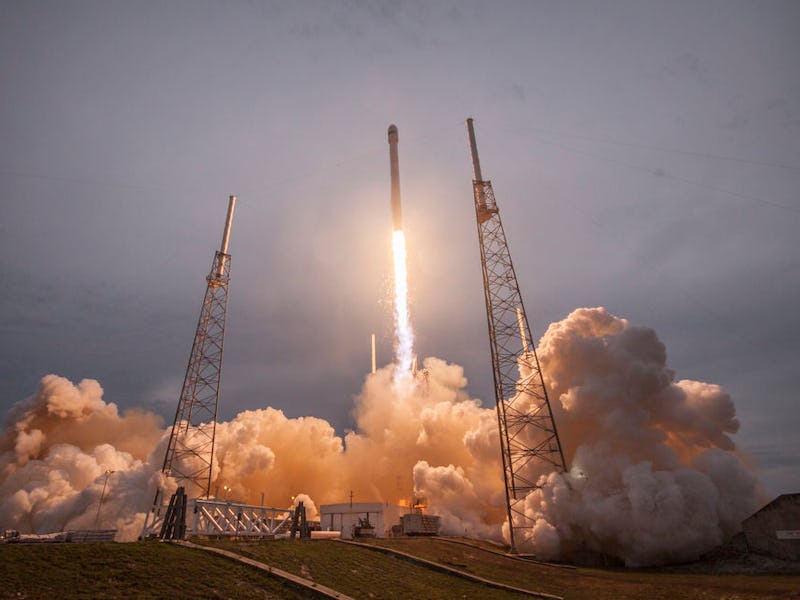SpaceX is putting its plan to build an internet service provider into action. On Saturday, the company is expected to launch two Starlink satellites, part of its wider plan to send 4,425 satellites into orbit to bring broadband connectivity to the 57 percent of the globe without the internet. These plans will help fund Elon Musk’s ultimate goal of a manned mission to Mars.
According to letters posted by the Federal Communications Commission, the Microsat-2a and 2b spacecraft will lift off as part of the PAZ mission from the Vandenberg Air Force Base in California. Six ground stations located in the western United States will communicate with these two crafts, both of which have a designed lifetime of 20 months, to see whether SpaceX’s wider design could work on a mass scale. The mission completed a successful test firing last Sunday.
Join our private Dope Space Pics group on Facebook for more strange wonder.
The company outlined its internet provider goals to the Senate Committee on Commerce, Science, and Technology back in May 2017. Satellites are seen as a crucial way of plugging this gap as they don’t depend on ground-based infrastructure to bring users online.
“The satellites can ‘see’ them whether they are urban or rural,” Patricia Cooper, vice president of SpaceX’s Satellite Government Affairs, said during the committee meeting. “The common challenges associated with siting, digging trenches, laying fiber, and dealing with property rights are materially alleviated through a space-based broadband network.”
If all goes to plan, the company could begin deploying its wider array as soon as next year, with the goal of completing the array by 2024. That’s the same year as SpaceX’s proposed first Mars mission with humans, and Musk is hoping that the revenue from the business will fund its other projects. SpaceX is aiming big, suggesting that it could have 40 million subscribers bringing in $30 billion revenue by the year 2025. It all starts with this weekend’s PAZ mission.
